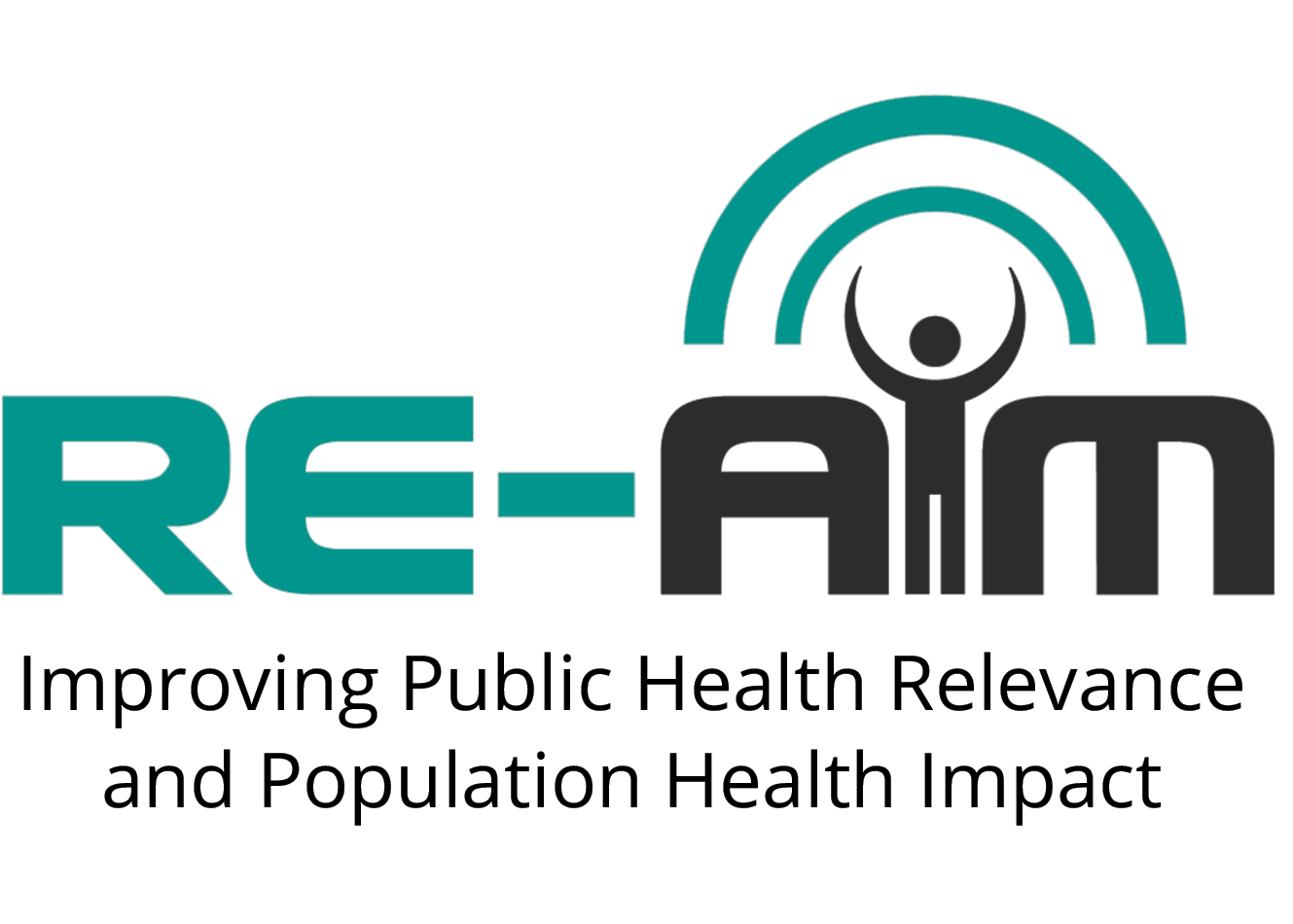REACH of Health Behavior Interventions
Definition: The absolute number, proportion, and representativeness of individuals who are willing to participate in a given initiative, intervention, or program, and reasons why or why not.Research Issue:
Are we giving enough consideration to representation in our studies?- Most health promotion intervention studies report the size of the study sample and the proportion of individuals who are willing to participate. The proportion is operationalized as participation rate, which is calculated as those who participate divided by the total number of eligible individuals.
- In contrast, few studies report the representativeness of the study sample. Representativeness is defined as the similarity or differences between those who participate and those who are eligible but do not. If differences do exist, a given intervention may have a differential impact based upon these variables that cannot be determined due to the lack of representativeness of the sample. If differences do not exist, then a stronger case for the generalization of the intervention into real-world settings may be made. Comparisons should be made on basic demographic characteristics and, when possible, on primary outcomes.
Examples of REACH from the literature:
Stopponi and her associates (2009) provide an example of determining the representativeness of study participants to a given target population. The MENU trial was conducted among five health plans participating in the HMO Cancer Research Network in collaboration with the University of Michigan Center for Health Communication Research. Approximately 6000 health plan members per site, between the ages of 21 and 65, and stratified by gender with oversampling of minority populations, were randomly selected for recruitment to an online dietary intervention trial. Of 28,460 members invited to participate, 4270 (15.0%) accessed the website. Of the eligible responders, 2540 (8.9%) completed the consent form and baseline survey and were enrolled and randomized. The odds of responding were 10% lower for every decade of increased age (P < .001), while the likelihood of enrolling was 10% higher for every decade increase in age (P < .001).
Women were more likely to respond and to enroll (P < .001). Those living in a census tract associated with higher education levels were more likely to respond and enroll, as well as those residing in tracts with higher income (P < .001). With a 22% (n = 566) enrollment rate for African Americans and 8% (n = 192) for Hispanics, the enrolled sample was more racially and ethnically diverse than the background sampling frame. Relative to members invited to participate in the Internet-based intervention, those who enrolled were more likely to be older and live in census tracts associated with higher socioeconomic status. While oversampling of minority health plan members generated an enrolled sample that was more racially and ethnically diverse than the overall health plan population, additional research is needed to better understand methods that will expand the penetration of Internet interventions into more socioeconomically diverse populations.
Glasgow and colleagues (2006) report on two studies to determine whether a smoking reduction intervention would appeal to additional or different types of smokers than do cessation interventions. Study 1 attempted to contact 160 HMO smokers scheduled for outpatient surgeries. In Study 2,actual pilot reduction and cessation programs were offered to 531 smokers about to undergo out-patient surgeries or procedures. In Study 1, 39% of those eligible elected smoking reduction; and 38% selected cessation. In Study 2 of those eligible, 22% began participation in the smoking reduction program; 12% preferred a cessation approach; and 65% declined. There were few demographic or smoking history differences among those who elected smoking reduction, cessation, or declined. Among this understudied population, a sizable proportion in both studies agreed to participate in smoking reduction. If replicated, this suggests that comprehensive programs that include a smoking reduction component could substantially increase their reach.
Ready to use RE-AIM in planning, implementing, or evaluating?
